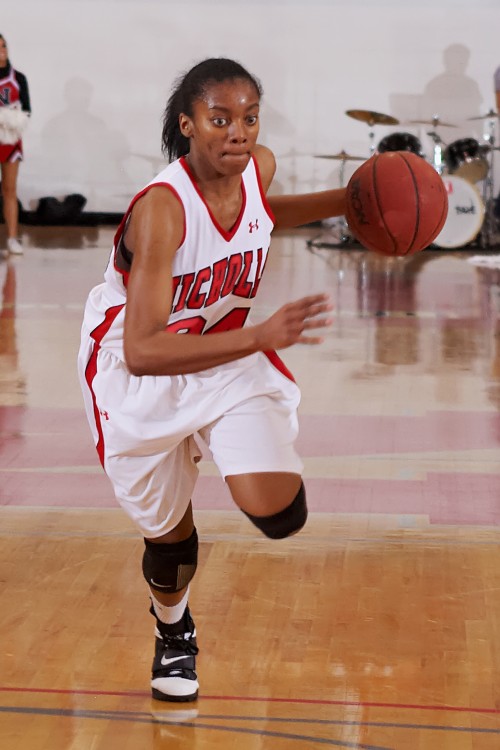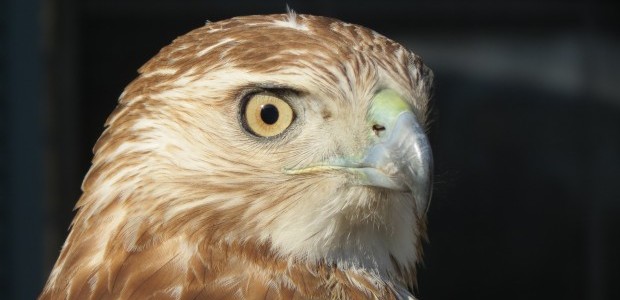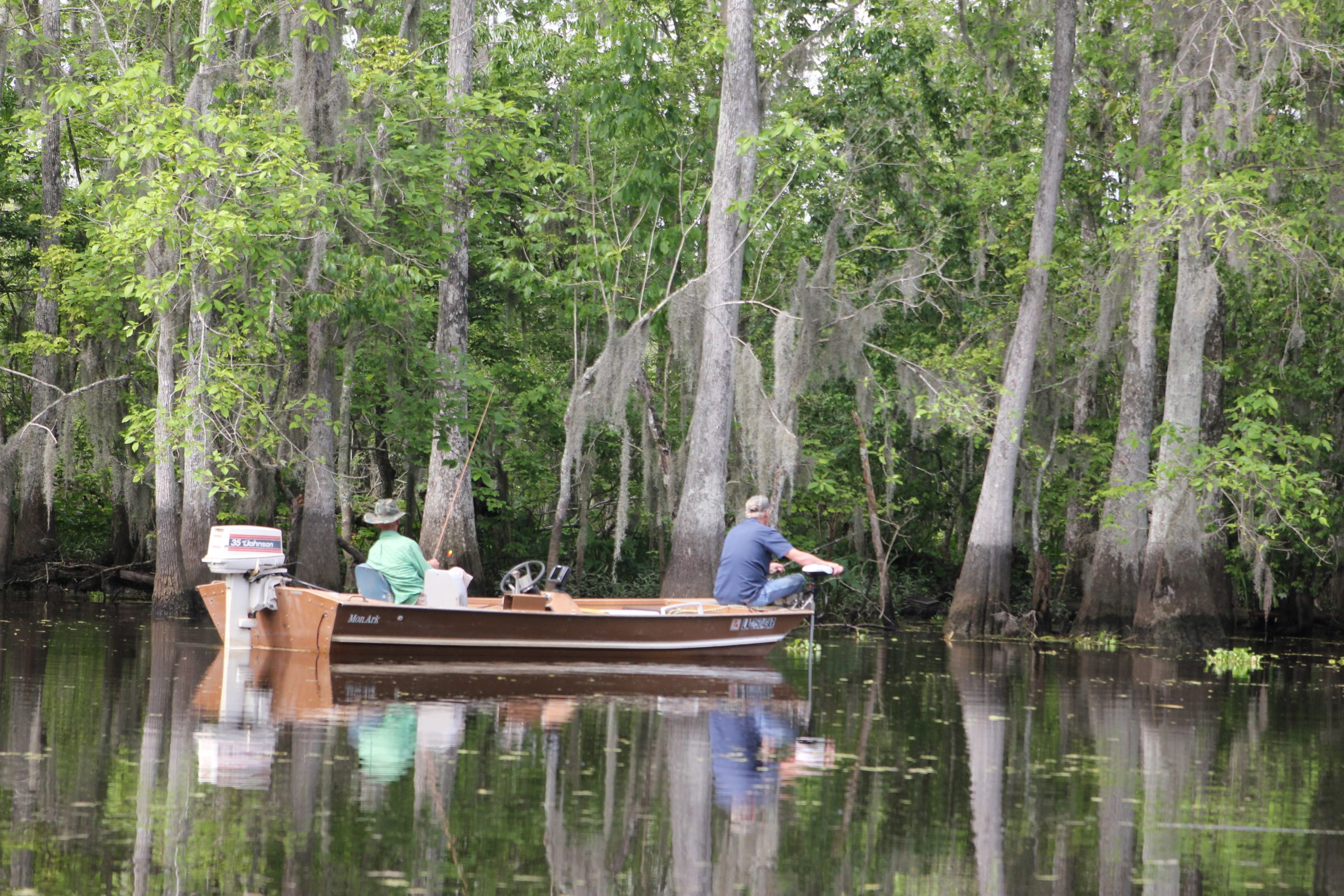
Colonels split Southland Conference opening week
January 8, 2013Morganza to cost $13 billion
January 8, 2013Beware of the flying Marshmallow.
‘Cause she’s on the hunt.
“I’ve had her for about three weeks,” said 60-year-old Master Class falconer Josh Tanner as he tapped on his glove and whistled, directing Marshmallow, a wild 6-month-old red-tail hawk onto his wrist. “I’ve been fascinated with birds of prey since I was a boy. I’d read books about hawks and owls.”
Houma resident Tanner is among approximately 80 licensed falcon hunters in the state who, using birds like Marshmallow or Harris hawks, take small game like rabbits, squirrels and even ducks.
“These birds can overtake ducks, ones that are slow to take off, like mallards and puddle ducks,” Tanner said. “They use their weight and gravity to their advantage. They kill with their feet, not with their beaks.”
Similar to hunters using guns or bows, Tanner must follow season dates and bag limits when hunting with a bird of prey; however, unlike armed hunters, Tanner is able to hunt anywhere he wants, even within city limits, as long as he has permission from the property’s owner.
“You have to apprentice for two years under a master falconer,” Tanner said. “You also have to take a test at the Louisiana Department of Wildlife and Fisheries office in Baton Rouge. You need to know a lot about birds – the birds of prey classes, care, diseases and cures. A biologist from LDWF must also come out and inspect your equipment (namely, the cage in which the bird is housed).”
In the eight years since Tanner began his road to master class falconer, he has trapped more than 100 birds and kept six, each for the duration of a hunting season. Once the season closes, Tanner releases the bird back into the wild.
“I usually get a new bird each year,” he said. “I actually kept one for five years. He took 187 squirrels in a hunting season. The birds go back right where they left off before I caught them. I continued to see (the birds) for a while after I released them, and I even called one back down to the glove once.”
In addition to being native to the state, red-tail hawk Marshmallow is also native to the Houma neighborhood – Tanner caught her near St. Louis Canal.
“I prefer the hawks to falcons,” Tanner explained, as Marshmallow hopped back and forth between Tanner’s arm and her perch in the yard. “They are more aggressive. Harris hawks, which are native to Mexico and southern Texas, are usually pen-raised here, but older, wild birds like Marshmallow know what they can and can’t attack. These birds have had more than 4,000 years of training. Plus, I like the smaller birds because they are better with people.”
Occasionally, the cream and reddish brown colored bird looked as if she were slowly expanding, before giving a good shake and rustling her feathers.
“These birds are strong, powerful and can take native game,” Tanner said. “The best birds are the wild birds. It’s awesome to hunt with a wild animal.”
After catching a wild hawk, Tanner works with the bird every day, mainly establishing glove landings and getting the bird to a suitable weight for hunting. Females are bigger, usually about a third larger than male red-tail hawks, and can weigh anywhere from 1,200 to 1,600 grams.
“You want to hunt a female at about 1,050 grams,” Tanner said. “Both are good at hunting rabbits and squirrels, but the males are better at taking squirrels because they are smaller, faster and more agile. A squirrel ran over Marshmallow’s feet when she was sitting in a tree, and she just picked up her wings as it zoomed by.”
Once the animal is taught to follow the trainer by air or by flying from tree to tree, the guide then works to flush game from grass, brush or trees. After that, natural instincts kick in, and the hunt is on.
“When the bird overtakes the game, I approach the bird, cover the game with a towel and toss a piece of meat I already have to the bird, like a bait-and-switch,” he said as he hooked the jesses – thin leather straps used to tether the bird – to Marshmallow’s feet. “I feed them venison because they can’t have fat, and I also give them turkey necks for them to peck and pull and exercise the muscles in their neck.”
With rabbit and squirrel hunting on the back burner in favor of deer and waterfowl season, the area’s abundant populations of squirrels and rabbits are flush for Tanner and Marshmallow’s harvesting, and one of Tanner’s favorite spots to hunt is only a five-minute walk from his Lisa Park home.
“This is only her second hunt,” Tanner said as he crossed a ditch with Marshmallow patiently perched on his arm and headed into a set of fields with several dense tree lines.
Tanner soon reached the first tree line and released the bird’s jesses before raising his arm to signal take-off time.
“It’s time for me to start my beagle work,” Tanner said as he began poking into the brush with his walking stick and moving further down the tree line.
Within 90 minutes, Tanner rustled up about three rabbits, and Marshmallow made slips, or dives, on all three before taking to the top of a tall sycamore tree.
“You may see 20 rabbits during a hunt and not catch one,” Tanner said as he called Marshmallow to his glove. “But you can make the next hunt and get three in the first 30 minutes.”
Take 2
With the relatively small number of falcon hunters, those in a given area who take part in the sport are a tight-knit community, and Tanner is friends with the three other falcon hunters in the area.
“Red tails are normally hunted alone, but Harris hawks can be hunted in casts, or packs, and Jeff has one of each,” Tanner said as fellow hunter Jeff Lecompte of Thibodaux unloaded his two hawks, Alex, a wild red wing hawk, and Amy, a pen-raised Harris hawk, from his truck.
The hunters made their way back to the same area where Tanner had hunted Marshmallow the previous week, and Lecompte let Amy loose from her jesses first.
Thirty minutes later, the two men had flushed about 10 rabbits out into the open, and Amy made dives on all but three. Two of the seven rabbits made quick escapes under fences and into yards of homes. One squirrel also caught Amy’s attention but made a quick getaway into its nest.
“I normally hunt her in a cast,” Lecompte said as he placed Amy back in her carrying cage and retrieved Alex from his. “I think she was looking for the other birds that are normally chasing with her. Harris hawks miss more than red tail hawks, but they chase more than red tails.”
With most of the rabbits having ducked to safety during Amy’s hunt, Alex only had a handful of rabbits to make slips on but due to strong wings, the bird spent most of his non-tree time soaring above the treetops.
“Guess we should have hunted Alex first,” Tanner said, laughing as he and Lecompte packed up the birds for the day.
Getting your falconry permit
The first step in becoming a falconer: meeting the minimum age requirement of 16 years of age.
“I got a hand-written note from an 11-year-old boy in Jennings today,” said LDWF biologist and falconry coordinator Jimmy Ernst. “He wanted to apply for his apprentice license, but I’m writing him back today to tell him he still has a few more years to go.”
While Ernst is happy to see such a young person interested in falconry, getting a license is not something to be taken lightly by anyone, young or old.
“It’s an incredible commitment to train a falconry bird,” Ernst said. “You have to work with them every day. You can’t put these birds away like a gun or a fishing rod and only pull them out when the season is on.”
LDWF established rules and regulations for falcon keeping and hunting back in 1978. Beginning falconers start at the apprentice level and must find a general or master class falconer to sponsor and supervise them for a minimum of two years. In addition to testing and the building and LDWF inspection of the bird’s mew, a beginning falconer must apply for the state game breeders license and complete the state and federal falconry permit application. Cost for the federal falconry permit is $100 for a three-year permit.
“The sport is obscure, but it is slowly growing,” Ernst said. “There is a continued interest, and the numbers have been pretty steady over the years. In the last two weeks, I’ve gotten calls from two different guys who want to get started. (Some of) the old-timers are getting out, but new people are coming into the sport. Many of those getting started are in their late 20s and early 30s, but we also have a falconer who is in his 70s.”
Ernst pointed to the perk of hunting in city limits as being a big draw for the sport.
“It doesn’t take much habitat to hunt with a falcon,” Ernst said. “You can hunt with raptors pretty much anywhere. Some of the guys I talk to say some of the best hunting they have done is on empty lots or old fields within city limits.”
So next time you see a hawk in the middle of town, don’t wonder what it is he or she is after, ‘cause they are on it.
Marshmallow is the red-tail hawk of local master class falconry hunter Josh Tanner. Tanner is one of about 80 people in the state licensed to hunt small game using raptors. Below, falcon hunter Jeff Lecompte of Thibodaux moves Amy, a pen-raised Harris hawk, to another location during a rabbit hunt near the Lisa Park neighborhood in Houma.











